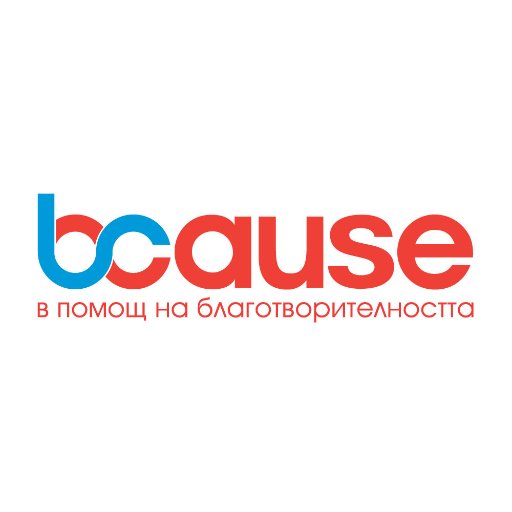
ARTON PROGRAM - The therapeutic power of the group
Creative projects involving group work - general musical performance or group painting, collage, sculpture - are useful in helping to explore and strengthen social...
Children with attention-deficit hyperactivity disorder (ADHD) find it unusually difficult to concentrate on tasks, to pay attention, to sit still, and to control impulsive behavior. This guide offers parents the information you need to understand the behaviors associated with the disorder and make effective decisions for your child about symptoms, diagnosis, and treatment.
Attention-deficit hyperactivity disorder, or ADHD, is a condition that makes it unusually difficult for children to concentrate, to pay attention, to sit still, to follow directions, and to control impulsive behavior. While all young children are at times distractible, restless, and oblivious to parents’ and teachers’ instructions, kids with ADHD behave this way much more often than other children their age. And their inability to settle down, focus, and follow through on tasks in age-appropriate ways makes it very hard for them to do what’s expected of them at school. It can also lead to conflict at home and difficulty getting along with peers.
Symptoms of ADHD are divided into two groups: inattentive behaviors and hyperactive and impulsive behaviors.
Inattentive symptoms of ADHD:
Hyperactive or impulsive symptoms of ADHD:
Some children exhibit only the first group ADHD of symptoms, and some exhibit only the latter. But the majority of those with an ADHD diagnosis have a combination of both, which can make it very difficult for them to function in school, and in other activities, and can create a lot of conflict at home.
ADD, or attention-deficit disorder, is an older term for the disorder we now call ADHD, or attention-deficit hyperactivity disorder. It was called ADD up until 1987, when the word “hyperactivity” was added. Some people still use the old term, ADD, out of habit, or because it’s a more familiar term than ADHD. Some use it to refer to kids with ADHD who aren’t hyperactive.
Yes. Kids who have trouble focusing but are not unusually restless or impulsive have a more inattentive type ADHD. They tend to be diagnosed later because they are less prone to disruptive or problematic behavior that comes to the attention of teachers and parents. But kids who have inattentive symptoms may start to struggle in the middle of elementary school, when it becomes increasingly difficult for them to keep up.
While ADHD is called an attention deficit disorder, experts say what’s really disordered is the child’s ability to control and direct what he’s paying attention to. So many kids with ADHD are perfectly capable of intense focus on things that are very exciting to them, like video games, but they can’t maintain that kind of focus on things that aren’t immediately rewarding, like schoolwork or putting on their shoes or going to bed.
That intense concentration, sometimes called hyperfocus, is also the reason kids with ADHD often get upset when asked to stop doing something they are engaged in, like a favorite activity at school or playing a video game. They have what experts call an inability to “attention switch,” which can cause a lot of conflicts with adults.
And speaking of video games: Because they are constantly stimulating and rewarding, experts say they can induce a kind of trance state in a child who has trouble regulating her attention. In that case, it’s less a matter of hyperfocus than what one calls “screen suck.”
Executive functions are the self-regulating skills that we all use to accomplish tasks, from getting dressed to doing homework. They include:
Most kids with ADHD have deficits in some executive functions, though not all children with executive function issues have ADHD.
Yes. Their inattention and impulsivity also affects their friendships, extra-curricular activities, and family life. They may have trouble making and keeping friends because they interrupt constantly, and are prone to blowing up when they don’t get their way. It’s not uncommon for children with severe ADHD to be blackballed from playdates because they can’t be counted on to behave. Kids with ADHD may have trouble playing on teams because they find it hard to focus and follow the rules.
At home, they may find themselves on a collision course with parents and siblings because they don’t follow instruction, are impulsive, and melt down when they are asked to transition from some activity they enjoy to mealtime, homework time, or bedtime.
By the time kids with ADHD reach adolescence, their impulsivity can be dangerous, making them prone to car accidents, unsafe sex, and other risky behaviors.
Defiance and emotional outbursts are very common in kids with ADHD, though they are not, themselves, symptoms of ADHD.
Kids who have ADHD tend to become defiant when they are expected to do things that are hard for them, especially when it means stopping something that’s pleasurable—like playing a video game. So things like homework, going to bed, getting dressed, and coming to dinner can become battlegrounds. These situations are difficult for them to tolerate because of inherit deficits in paying attention, tolerating a boring situation, reining in impulses, transitioning from a fun activity, and controlling their activity level. Since these situations are really challenging for them, they may try to avoid them. Unfortunately when it comes to ADHD parenting, the avoidance strategies that these kids typically use are disruptive behavior, tantrums, arguing, defiance, and power struggles.
ADHD symptoms change as children get older, and it’s estimated that about a third of children who are diagnosed with the attention-deficit hyperactivity disorder will no longer meet the criteria by the time they reach young adulthood.
In general, hyperactivity declines as kids move through elementary school, and inattention becomes the primary problem for them as the schoolwork they are expected to do becomes more demanding and their parents and teachers are not so closely supervising their activities. In adolescence, impulsivity also becomes a big concern, as it leads to car accidents, unsafe sex, and other risky behavior.
Children who are most likely to have ADHD that continues into adulthood are those whose symptoms are very severe in childhood, and those who also have another psychiatric disorder, like depression or anxiety.
When is ADHD diagnosed?
Because the symptoms of ADHD can also be the result of other issues, such as anxiety, depression, or trauma, a professional diagnosing your child should carefully rule out other possible reasons for his behavior.
A child should receive an ADHD diagnosis only if he exhibits a variety of inattentive or impulsive behaviors
How is an ADHD diagnosis done?
To make an accurate diagnosis, a clinician should collect information from several people who have observed your child, including you, other caregivers, and teachers.
Parents and teachers should be asked to fill out a rating scale, such as the SNAP, the Child Behavior Checklist, or Connor’s Checklist, to capture an accurate assessment of the frequency of symptoms over a period of time. A child may be given a test called a Continuous Performance Test, which rates her ability to complete a repetitive task over a period of time and can give a more complex picture of her ADHD symptoms.
A child should not be diagnosed with ADHD just based on a parent’s or teacher’s report that she is overly active or distracted.
Who can diagnose ADHD?
ADHD can be diagnosed by any doctor or mental health professional, including:
But in the majority of cases, only medical doctors like psychiatrists can prescribe medication to treat it. (Some states allow psychologists to prescribe, and nurse practitioners and physician’s assistants often can, as well.) The overwhelming majority of ADHD diagnoses are made by pediatricians, though parents should be aware that many pediatricians don’t have advanced training in psychiatric disorders, and an ADHD diagnosis should not be made in a quick office visit, based solely on a report that a child is having trouble concentrating in school. Inattention can be caused by other things, and giving a child ADHD medication won’t address his problems if he doesn’t have ADHD.
What is the most effective ADHD treatment?
Research shows that a combined approach of medication and behavioral therapy is the most effective treatment.
For moderate to severe cases of ADHD the first line of treatment is usually medication. ADHD medications called psychostimulants, which increase the amount of certain chemicals in the brain, help children focus and curb impulsivity and hyperactivity.
Behavioral therapies help kids rein in impulsive behavior and be better organized.
Finding the right dose
Since different children metabolize medication in different ways, the goal is to find the formula that delivers an effective dose over a desirable period of time for your child. Getting the right dosage for a particular child takes several weeks of trial. The clinician normally increases the dosage gradually until it becomes effective. If your child experiences undesirable side effects, it may mean that the dosage is too high, or the medication isn’t right for her. Once an effective dosage is established, your child should be monitored periodically to make sure it’s still meeting her needs as she grows.
Side effects of stimulant medications
Stimulant medications can be very effective in reducing symptoms of ADHD, but some kids do experience adverse side effects. They include:
Should children stop taking ADHD medication during holidays and the summer?
Since children with ADHD don’t need to perform academically during the summer or on extended holidays, parents sometimes seize the opportunity to take kids off their regular medication regimen, especially if they are experiencing side effects. Other parents avoid an interruption, fearing that their children’s behavioral problems will rebound.
One reason to stay with treatment year-round is that ADHD doesn’t only affect a child’s performance in school. During the summer, children still have to get along with family and friends and function effectively in group activities like sports and camp.
However, if you are concerned that taking a stimulant medication may be slowing your child’s growth, a summer break can allow him to catch up. And if you are concerned that he is underweight due to suppressed appetite, a summer without medication can help him put on some pounds.
What are the behavioral treatments for ADHD?
Behavior therapies do not eliminate the core symptoms of ADHD, but they can be very helpful in teaching children to manage them better. For example, children who have trouble finishing things and staying organized can learn techniques for completing tasks, keeping track of assignments, and getting their schoolwork done.
There’s also a kind of behavior therapy for ADHD called parent training that can help reduce behavior problems that stem from ADHD in children. Parent-child interaction therapy and other forms of parent training teach parents how to work with their kids to cultivate good behaviors while minimizing impulsive or inattentive ones. Stimulated by more positive reinforcement, kids who have been out of control can learn to rein in their behavior and enjoy more rewarding relationships with parents and teachers.
As children get older, they often begin working more one-on-one with clinicians to strengthen their organizational skills and develop effective behavioral plans.
When a child is old enough, cognitive behavioral therapy can help teach her to control her behaviors by understanding how her thoughts and feelings influence them.
What can we do to help kids strengthen executive functions?
To bolster kids with weak skills in these areas, learning specialists teach a mix of specific strategies and alternative learning styles that complement or enhance a child’s particular abilities.
With elementary school children, the educational specialist usually works with parents and kids together, to establish routines and tools to use to get work done successfully and with minimal conflict. For instance:

Creative projects involving group work - general musical performance or group painting, collage, sculpture - are useful in helping to explore and strengthen social...

In the ARTON Program our team of oncopsychologists, art therapists and music therapists develops the process of children's creativity as a process of...

In ARTON sessions, creating a piece of music or a song is an emotional experience of coping and satisfaction for the participating children. They make friends with...

Painting provides patients with a spontaneous, plastic method of depicting thoughts and experiences. Painting with paints is not as structured as with pencil or...










